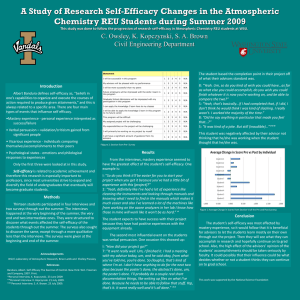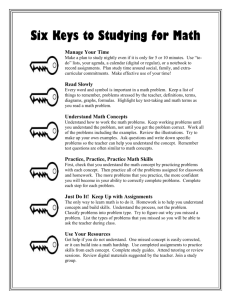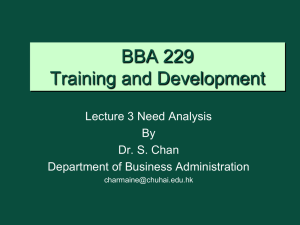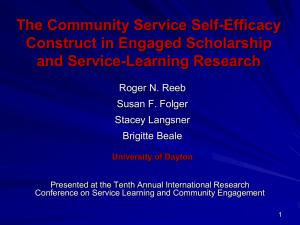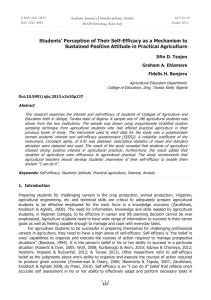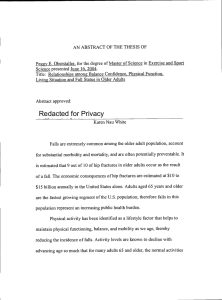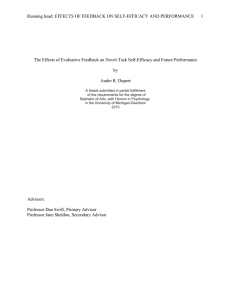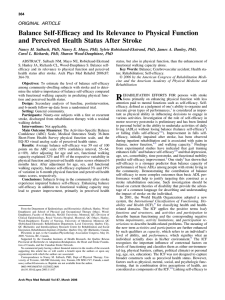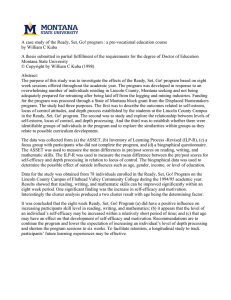Self-efficacy of General Education Mathematics Students
advertisement
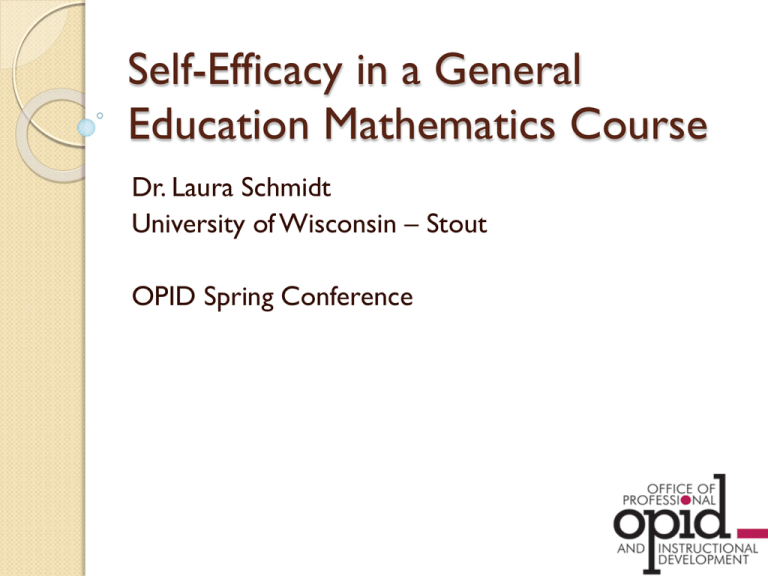
Self-Efficacy in a General Education Mathematics Course Dr. Laura Schmidt University of Wisconsin – Stout OPID Spring Conference Background OPID two year project on the gap between students’ and instructors’ expectations, and the impacts of closing the gap. Motivational aspect unchanged from the project. Led to current Teaching Scholars project on motivation which transformed into a project on self-efficacy. Context Concepts of Mathematics Course 39 students Majors: education, art, health & wellness, vocational rehabilitation, hotel, restaurant & tourism, apparel, communications & media, human development & family studies Required course for general education Methodology Weekly surveys (wk 2 – wk 15) In-class every Monday Survey Demographics included Likert questions scale: 1 (not at all true of me) – 5 (very true of me) Open ended questions Questions I’m confident I can learn the basic concepts taught during this week. I’m confident I can understand the most complex material presented by the instructor this week. I’m confident I can do an excellent job on the assignments, problems and tests this week. I’m confident I can master the skills being taught this week. Questions continued Compared with other students in this class, I expect to do well on this week’s assignments. Compared with other students in this class, I think I’m a good student. Compared with other students in this class, I think I know a great deal about the subject. Questions continued I can solve most problems this week if I invest the necessary effort. I can remain calm when facing difficulties on problems this week. I can persevere when encountering difficulties on this week’s assignments. Questions continued Briefly describe your study plan this week, if any. What and how are you feeling about your progress in this course? Are there any elements of the class that you feel may be especially helpful or harmful to your progress? Response Rates 39 students in class Seven students did all 14 surveys, ~18% response Six students missed only one survey, ~15% Eleven students missed between 2-5 surveys, ~28% Remaining missed 6 or more surveys Overall Class Results Overall Self-Efficacy Scores 4.4 4.3 4.288 4.2 4.1 4.25 4.211 4.124 4.069 4.132 4.067 4 3.969 3.9 3.869 3.8 3.92 3.9 3.867 3.841 3.78 3.7 3.6 3.5 Wk 2 Wk 3 Wk 4 Wk 5 Wk 6 Wk 7 Wk 8 Wk 9 Wk 10 Wk 11 Wk12 Wk 13 Wk 14 Wk 15 Summary Optimistic on the first survey Lower scores near exam times Lowest score near logic chapter Highest score near geometry chapter Newer topics have lower scores, and review topics have higher scores Individual Student Results Self-Efficacy Student Comparison 5.1 4.9 4.7 4.5 Self-Efficacy Score 4.3 4.1 3.9 3.7 3.5 3.3 3.1 2.9 2.7 2.5 2 3 4 5 6 7 8 9 10 11 12 13 14 15 *Includes scores for 7 students who completed all 14 surveys Future Work Analyze remaining data from fall and spring semesters Analyze by gender, age, first-generation status Analyze qualitative responses Develop plan for interventions Thanks! Encouragement and support from the Wisconsin Teaching Fellows & Scholars Program, and the Office of Professional and Instructional Development. UW-Stout Provost’s Office UW-Stout Mathematics, Statistics, and Computer Science department
